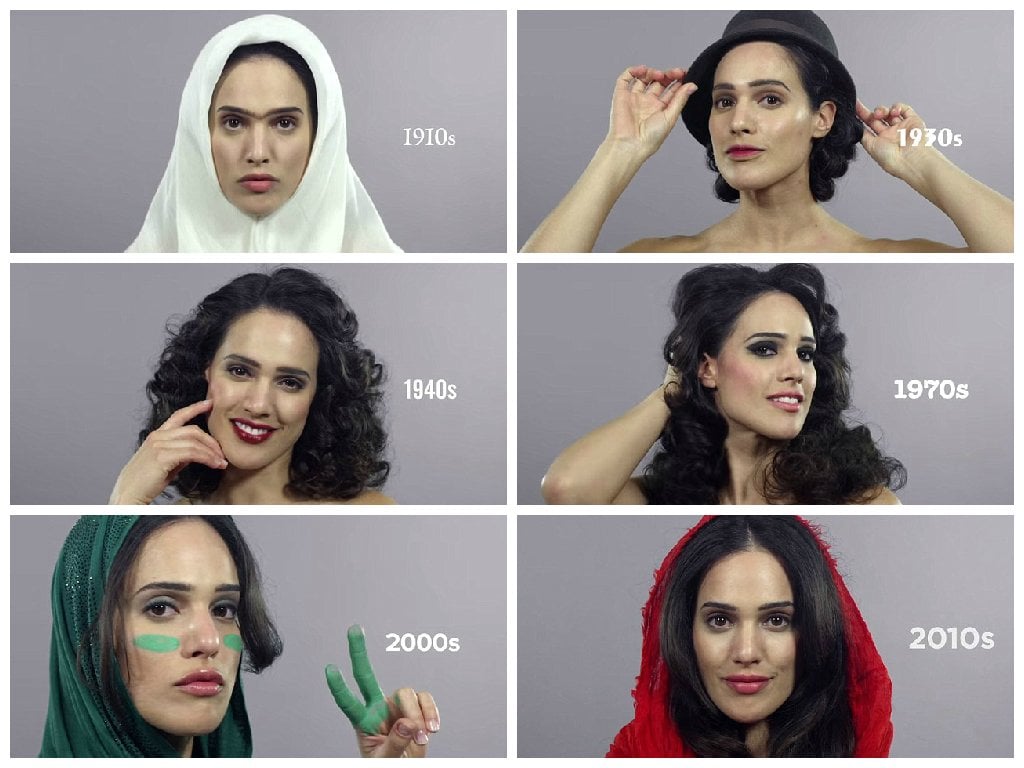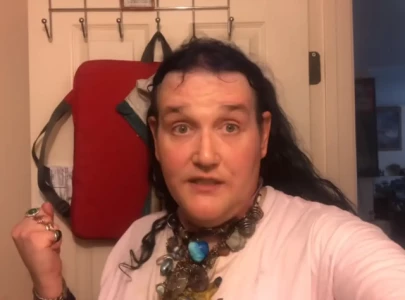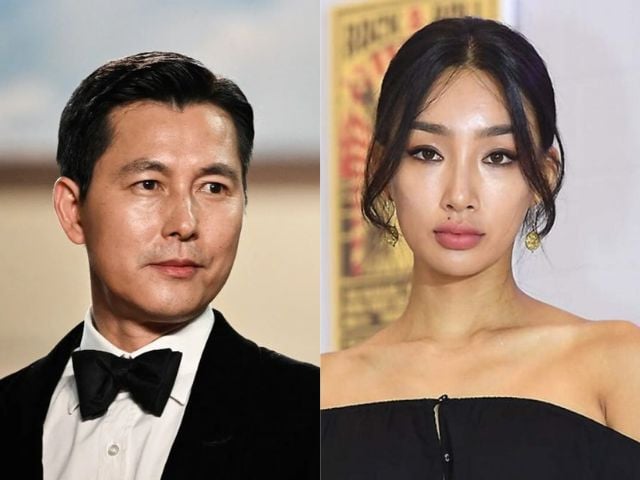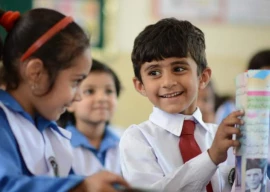
The clip titled, ‘100 Years of Beauty’ shows Iranian-American model Sabrina Sarajy going through make-overs and posing with looks summing up each decade and its unique beauty trend.
1910s
The first look captures the model sporting a white hijab, a monobrow and no make-up in keeping with the trend at the time. Sarajy’s somber expression and look reflect the subservience of women to men in that era.

1920s
As Iran moved towards greater independence for women in the 1920s, the model’s purple scarf exposing more hair than the previous decade reflect the change in times.

1930s
In the '30s, Sarajy replaces a scarf for a hat as the scarf was banned in Iran. Her curly hair in keeping with the global hair trend at the time and lipstick show a move towards use of cosmetics and global trends.

1940s
Sarajy’s bright red lipstick and loose, curly hair indicate a bolder turn towards global fashion inspired by the west at the time. Her smile radiates hope and positive times for women in the country.

1950s
The '50s show Sarajy with hair tied back and pink lips replacing the vibrant red in the decade earlier. Her look is reflective of the post-World War II years.

1960s
Inspired by the West, Sarajy sports the beehive hair-do. In this decade, she also sports heavier make-up with a brighter blush and flicked eye-liner.

1970s
Long, loose waves and heavy make-up define the seventies in Iran. Sarajy looks happy equal ruights in marriage and divorce granted to women in this decade.

1980s
A flashback to 1910 following the Iranian Revolution of 1979 and a regress in women’s rights, Sarajy is seen wearing a hijab as covering the head was enforced once again. Oozing repression of the time, the model wears a black scarf completely covering her head and neck. Further, she wears no make-up and looks visibly unhappy.

1990s
The Nineties, bring back a smile and coloured scarf. Donning a blue polka-dot scarf exposing more hair than the previous decade, Sarajy appears to be praying... She clasps her hands as if praying for a better future.

2000s
Reflective of Iran’s Green Revolution – a struggle to attain human and civil rights the model wears a green hijab and green paint on her cheeks. Sarajy also makes a peace sign with her green-painted fingers.

2010s
In the last look, Sarajy's long hair loose falls on her shoulders with a bright red scarf neatly but loosely covering them. Donning subtle make-up, the model smiles meekly.





1732538123-0/BeFunky-collage-(90)1732538123-0-165x106.webp)

1732530440-5/Copy-of-Untitled-(85)1732530440-5-270x192.webp)



1732534225-0/Express-Tribune-(13)1732534225-0-270x192.webp)






COMMENTS (5)
Comments are moderated and generally will be posted if they are on-topic and not abusive.
For more information, please see our Comments FAQ